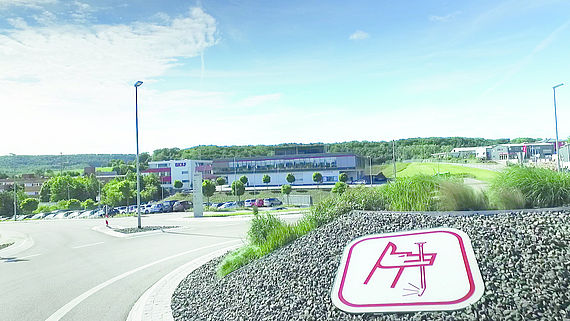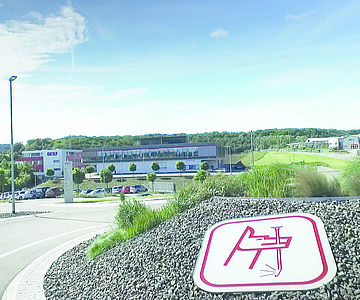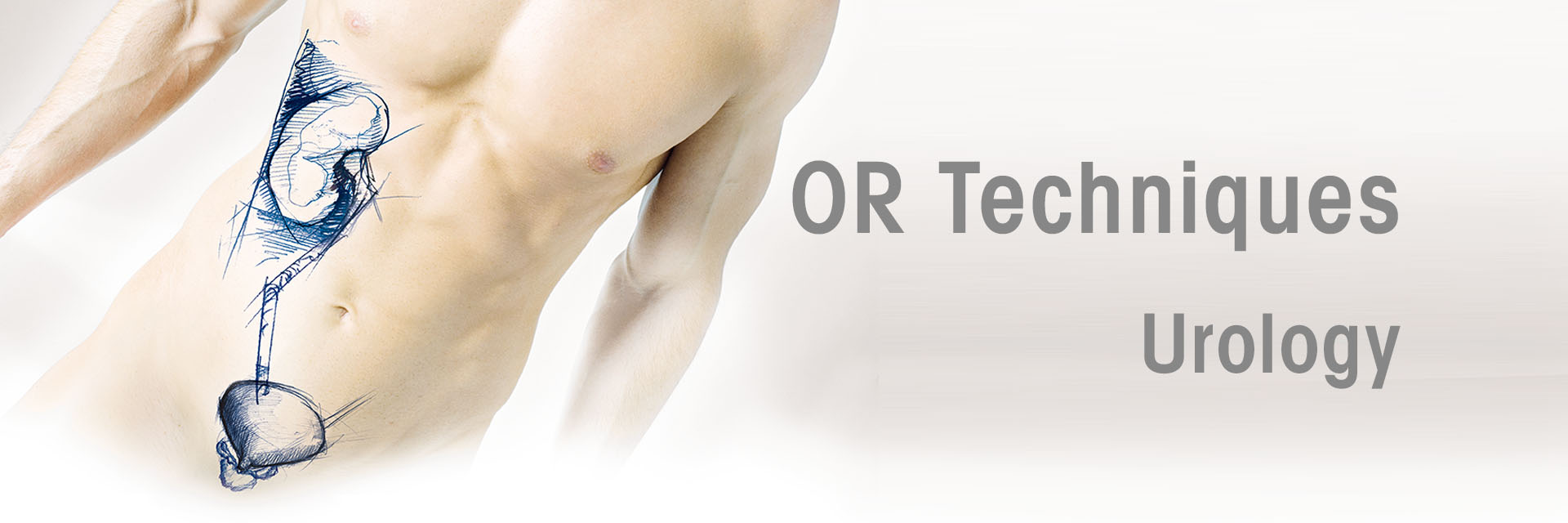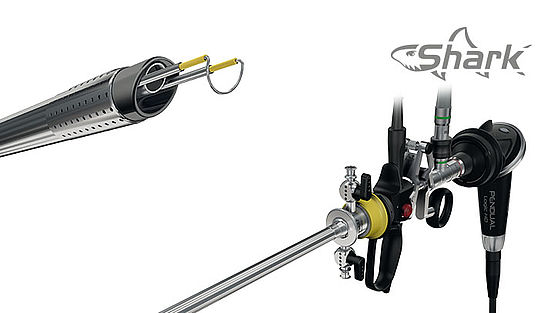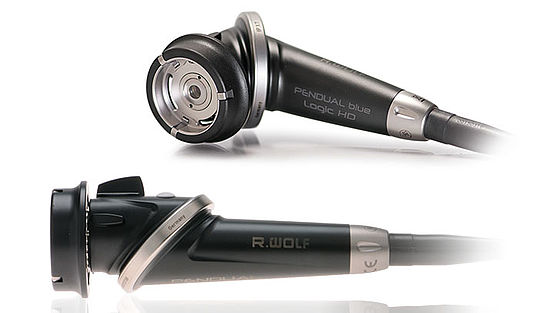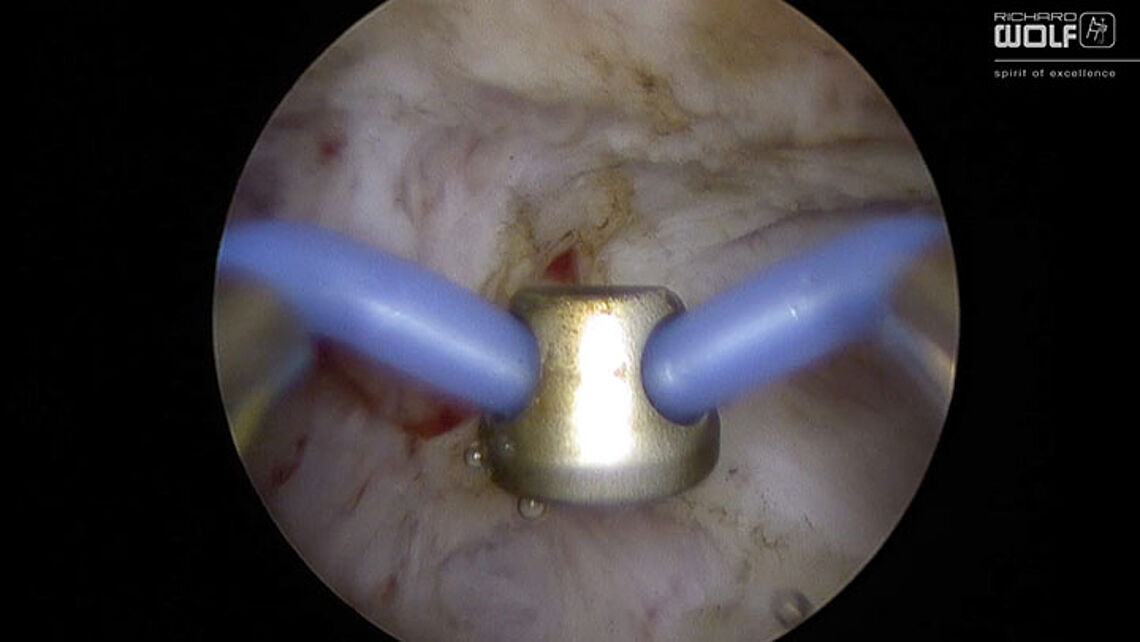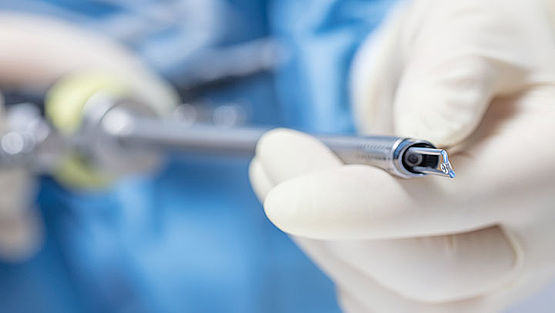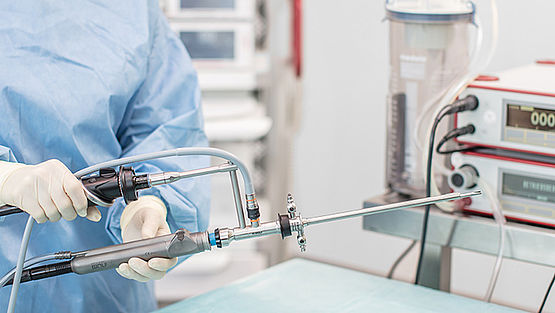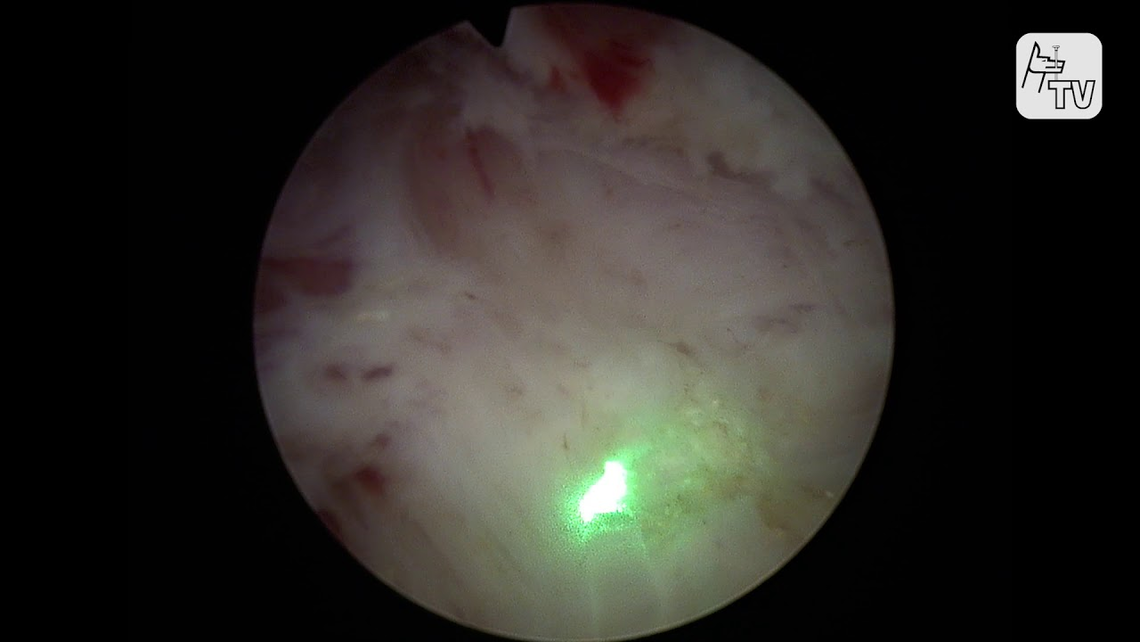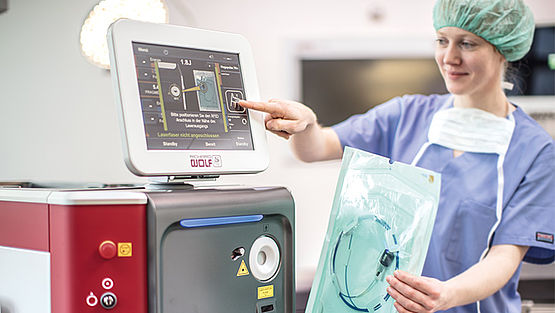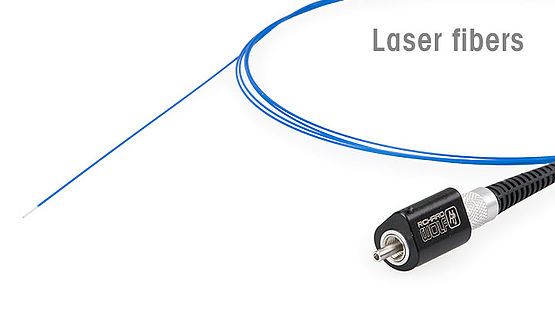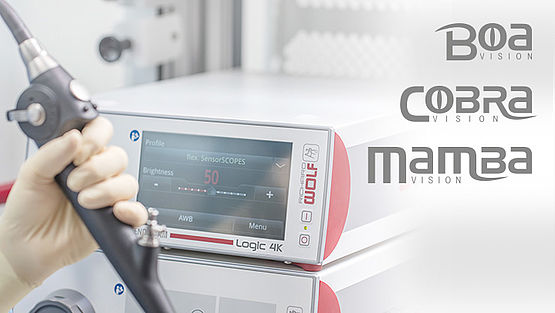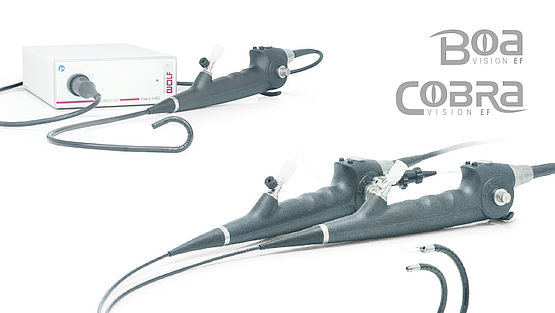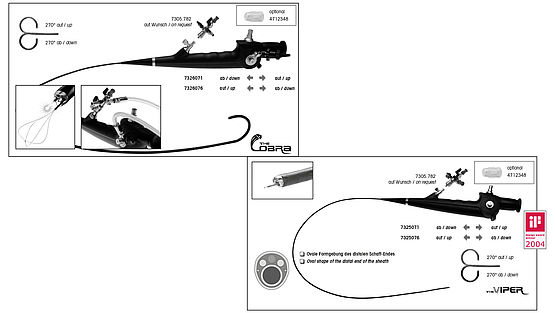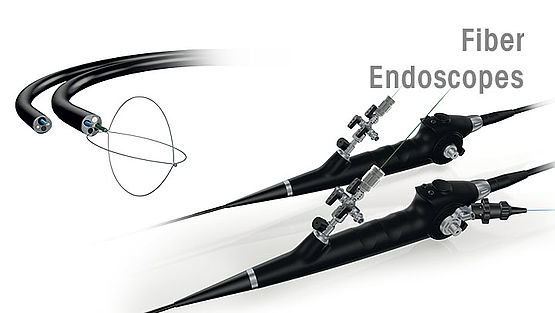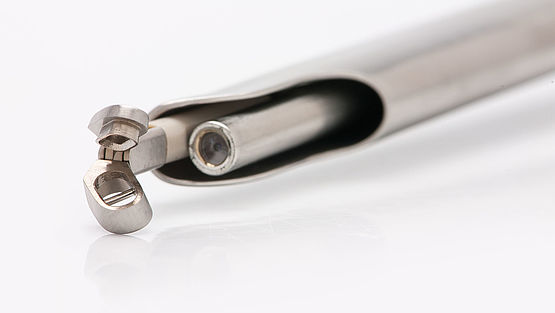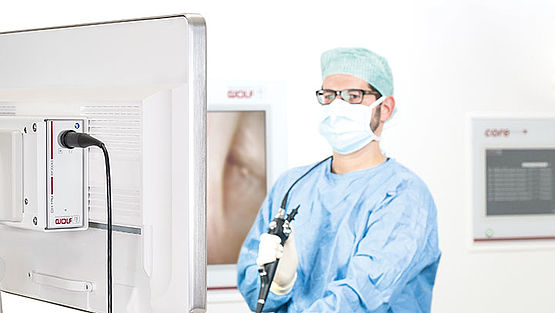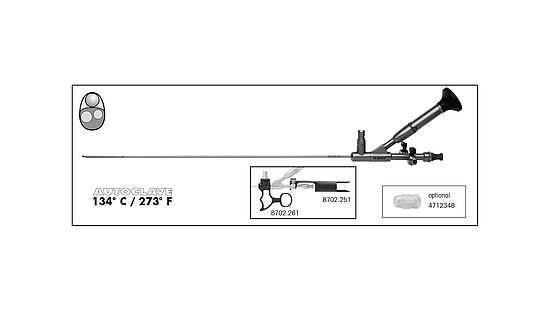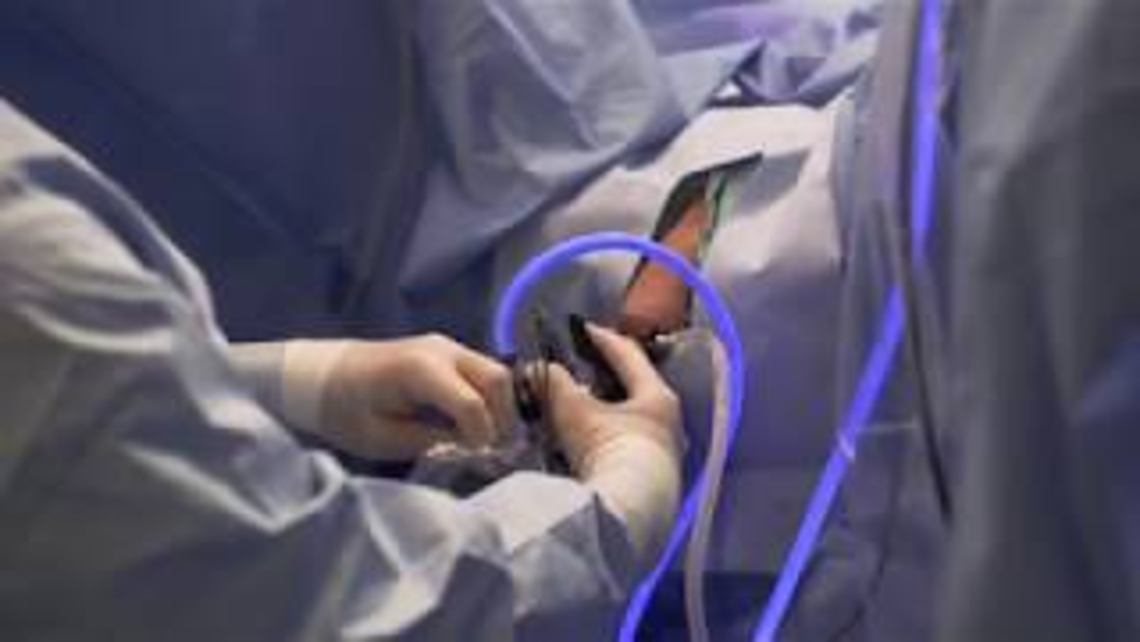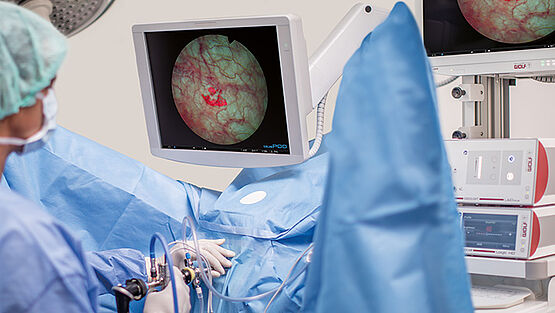Surgical techniques in urology
Advancements in minimally invasive surgery have influenced urology more than any other discipline. In just a short space of time, this has resulted in many new surgical techniques for the treatment of benign prostatic hyperplasia, urolithiasis, and urothelial carcinoma.
There are many processes available in urology for the endoscopic treatment of benign prostatic hyperplasia. Besides the long-established transurethral resection of the prostate (TUR-P), recent years have seen the introduction of several minimal invasive procedures such as bipolar enucleation, thulium laser enucleation or GreenLight laser enucleation of the prostate.
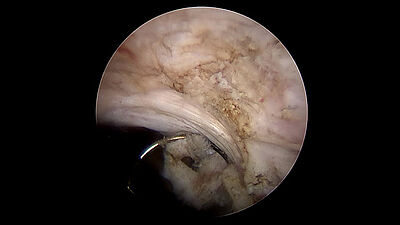
Transurethral resection of the prostate (TUR-P) is the gold standard method for treating benign prostatic hyperplasia.This method aims to remove surplus prostate tissue that stops urine from discharging. The outer layer of prostatic tissue, the prostatic capsule, the seminal hillock and the urethral sphincter remain unaffected.
Transurethral resection of the prostate is one of the oldest methods of minimal invasive surgery. This is an endoscopic method which is performed without an external cut through the urethra if diseased tissue has to be removed from the prostate. A rectoscope, consisting of an outer sheath and an inner sheath, is required. The sheath has two channels, one for supplying and one for evacuating fluid. The inner sheath of the rectoscope comprises a transporter, which allows the resection loop to move, and an optical system to which the light source and video camera are connected. An electrical current, which allows the tissue to be removed in stages and stops bleeding, flows over the resection loop.
Products for this technique
In addition to established methods for the treatment of benign prostatic hyerplasia (BPH), new methods are becoming increasingly important in endourology and a trend towards endoscopic enucleation of the prostate (EEP) can be observed in recent years. This is also reflected in the current EAU Guidelines (2018). In the current guidelines EEP is cited as the first choice for treatment of BPH for prostate glands > 80 ml.
Bipolar enucleation of the prostate significantly improves symptoms and the quality of life in patients suffering from benign prostatic hyperplasia. This technique achieves similar results to monopolar TUR-P, although bipolar enucleation poses a lower risk of bleeding-related complications.
Products for this technique
The Holmium Laser Enucleation of the prostate gland (HoLEP) is strongly recommended by both the American and European guidelines. It is regarded as a minimally invasive treatment for benign prostatic hyperplasia (BPH). Studies show that the effectiveness of HoLEP is equal or superior to other methods – whereby fewer side effects occur with HoLEP.
HoLEP is suitable for most BPH-patients, regardless of the size of the prostate gland. The blood loss, urinary incontinence and erectile dysfunction rates are lower than with other methods. The procedure per se lasts longer, but in return involves shorter catheter indwelling times and hospitalization periods. Even the repetition rates are lower.
To sum up, HoLEP is a gentle and effective procedure for minimally invasive treatment of the BPH.
Products for this technique

Thulium laser enucleation of the prostate (ThuLEP) is a minimal invasive transurethral procedure used to treat benign prostatic hyperplasia. Thulium (Tm:YAG) lasers completely remove the interior prostate gland by individually exciting the prostatic lobes, placing them in the bladder and extracting them using a morcellator. Supply vessels are disposed immediately and welded by lasers, which significantly reduces blood loss.
Products for this technique
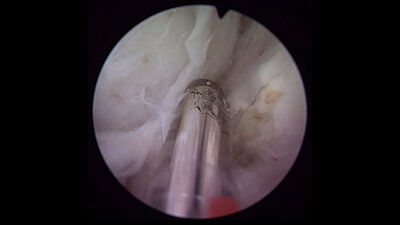
The GreenLight laser, with 80 to 180 watts of power and a wavelength of 532 nm, is especially suitable for ablation and hemostasis in the treatment of benign prostate hyperplasia. The energy is absorbed in the hemoglobin to create a high-energy density in the tissue. As a result, the vaporization point of the irradiated prostate tissue is quickly reached. The laser energy is introduced into the prostate through a laterally-emitting fiber. To make this possible, however, experts have developed a technique called "en-block" enucleation of the prostate. A cutting power of 80 watts and a coagulation power of 40 watts allows a complete nucleation of the prostate using GreenLight lasers.
The Greenlight method can, after carefully weighing up the risks, be used on patients whose anticoagulation must not be reduced with continued anticoagulation.
Products for this technique
Cystoscopy is the examination of the bladder using a cystoscope. The examination of the bladder is combined with that of the urethra. The cystoscope is pushed through the urethra into the bladder, and the integrated optical system shows the hollow space inside the organ on a screen. Flexible cystoscopy causes less discomfort and pain for the patient than the rigid method.
If you want to watch the OR-Videos, please register or log in.
Register now Log in now
Products for this technique

Ureterorenoscopy (URS) is the endoscopic examination of ureter and kidneys. During the examination stones can be fragmented by lasers and removed using a basket. Flexible ureterorenoscopy is an effective procedure for kidney stones of up to approx. 10 mm. Larger stones are removed by other methods.
In the last two decades, flexible ureterorenoscopy has been advanced by instruments having digital imaging, smaller outer diameters, wider working channel and active deflection. The complementary instruments such as forceps, baskets and laser technology that allow more complex procedures to be performed have also been improved.
If you are interested to watch the OR-Video, please register or log in.
Register now Log in now
Products for this technique

A miniaturized percutaneous nephrolithotomy (Mini-PCNL) involves inserting an endoscope through a small skin incision directly into the renal pelvis. Larger kidney stones could be destroyed and extracted. After the kidney stone has been fragmented by lasers, the debris is flushed out through the endoscope. The advantage of these extremely narrow instruments is minimal trauma to the kidneys.
If you are interested to watch the OR-Video, please register or log in.
Register now Log in now
Products for this technique
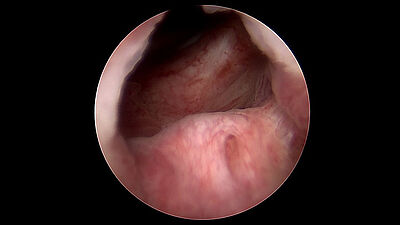
The rigid Cystoscopy is one of the most important diagnostic procedures in urology. It allows direct visualization of the urethra, the urethra sphincter, the prostate, the bladder and the ostia. The procedure is relatively simple and can be performed on an outpatient basis in most cases. For indications such as macro or micro-hematuria, hemospermia or azoospermia, incontinence, urination disorders, chronic pain of the pelvic floor, trauma or suspected foreign bodies, flexible cystoscopy is usually the preferred method. Rigid cystoscopy is suitable for more complex cases that may require additional therapeutic interventions, such as transurethral resection of bladder or prostate tumors, urethrotomy or Botox injections for treating incontinence.
Products for this technique

Rigid ureterorenoscopy is used not only to remove urinary stones, but also for the treatment of ureter constrictions, as well as the exclusion diagnosis of ureter and renal pelvis tumors. Under anaesthetic or with a spinal anaesthetic, the endoscope is pushed through the urethra up to the ureter or rather till in the kidney. Ureteral stones in the ureter and renal pelvis can be treated.
Products for this technique

At Ultrasound-induced lithotripsy ultrasonic waves will be redirected and the energy fragments the stone. With laser-induced intracorporal shock wave lithotripsy, high-energy laser light is conducted through highly-flexible laser fibers and fragments the stone.
Products for this technique
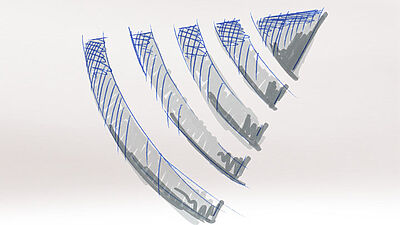
Extracorporeal shockwave lithotripsy is the most commonly used treatment for kidney stones, ureter stones, and bladder stones. Here pressure waves are generated outside of the body, which are coupled to the patient from the outside by means of a transducer and focused on the stone through skin and tissue in order to break it down into sand-like particles. Afterwards, the stone can easily be excreted in the urine through the urinary tract.
- Piezo technology
- Focus zones
- Localization and positioning
Photodynamic diagnostics, also referred to as fluorescence diagnostics, is suitable for diagnosing epithelial tumors (Carcinoma in situ) and precancerous lesions. A photosensitizer accumulates in or at the tumor cells, causing them to fluoresce after two hours and become visible during the endoscopic procedure.
If you are interested to watch the OR-Video, please register or log in.
Register now Log in now
Products for this technique

Pediatric urology is a highly specialized branch of urology and deals with the diagnosis and treatment of urological diseases that occur in children from birth to adolescence. Minimally invasive therapy has become increasingly important in recent years due to the miniaturization of telescopes and instruments and an improvement in surgical techniques.
